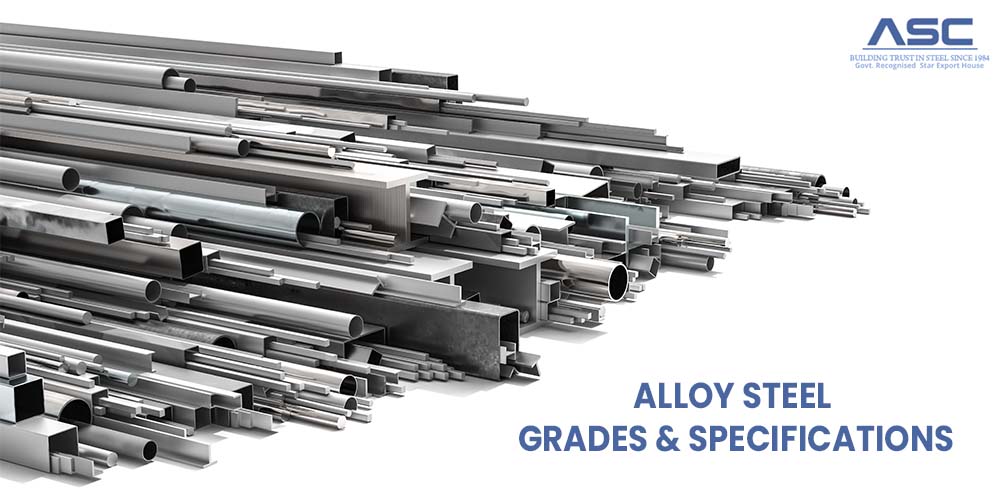Weight Formula for Steel - Calculating the Weight of Steel
by AMC
Posted on july 25, 2023 at 03:39 AM

The Weight Formula for Steel
In the metals industry, accurately calculating the weight of steel is crucial for project planning and cost
estimation. Whether you're involved in construction, manufacturing, or engineering, having precise weight
calculations ensures optimal resource allocation and efficient project execution. In this blog post, we will
explore various formulas used to calculate the weight of steel, empowering you with the knowledge needed to
make informed decisions.
In the realm of engineering and materials science, unit weight plays a pivotal role in understanding the
density and composition of various substances. Often expressed in pound/ft³, gm/cm³, kg/cm³, or kg/m³, unit
weight is a fundamental metric that defines the mass or weight per unit volume ratio.
The Unit Weight of Steel
The unit weight of steel, also known as weighted density, is a vital parameter in engineering and
construction. It represents the ratio of steel's weight to its volume and is typically expressed in kilograms
per cubic meter (kg/m3). Other common expressions include grams per cubic centimeter (g/cm3), kilonewtons per
cubic meter (KN/m3), and pounds per cubic foot (lb/ft3).
Typical Unit Weight of Mild Steel:
- 7850 kg/m3
- 7.85 g/cm3
- 78.5 KN/m3
- 489.84 lb/ft3
The Formula Used To Calculate the Weight of Steel
The formula used to calculate the unit weight of steel bars is D²/162. Where, D = Dia. Of steel bars, 162 is a
constant value.
Derivation of D2/162 Formula
Consider a steel bar with a diameter of D and a length is L.
Weight of Steel Bar (W) = Unit Weight of Steel Bar (γ) x Volume (V)
W = γ x V
W = πD²/4 x γ (V = πD²/4)
As known that Steel unit weight is about 7850 kg/m3 (γ)
W = πD²/4 x 7850
Here, D is steel diameter in mm, and the density of steel is in kg/m3. To make a constant value in the same
unit we will convert Dia. Of steel in mm to m.
D² mm / 1000²
W = π/4 x D²/1000² x 7850
W = D²/162.28 kg/m
W = D²/162 kg/m
| Unit Weight Of Steel | ||
|---|---|---|
| Size | Kg/m | Kg/feet |
| 6 mm | 0.222 kg | 0.067 kg |
| 8 mm | 0.395 kg | 0.120kg |
| 10 mm | 0.617 kg | 0.188 kg |
| 12 mm | 0.89 kg | 0.270 kg |
| 16 mm | 1.58 kg | 0.480 kg |
| 20 mm | 2.47 kg | 0.751 kg |
| 25 mm | 3.86 kg | 1.174 kg |
| 32 mm | 6.32 kg | 1.925 kg |
The Weight of Steel Plate and Sheet Metal
The weight formula for sheet metal indeed follows a straightforward calculation. By using the formula:
Weight (lbs) = Length (in) x Width (in) x Thickness (in) x Density (lb/in³)
You can accurately determine the weight of a sheet metal piece. For example, consider a 1/4" thick steel plate
measuring 6" x 8". To calculate its weight, apply the formula:
Weight (lbs) = 6" x 8" x 0.25" x 10.2 lb/in³ = 97.6 lbs.
This simple yet effective formula enables professionals in the metals industry to estimate costs and plan
accordingly, ensuring precise material handling in various engineering and construction applications.
The Weight of Steel Beams and Structure
When it comes to calculating the weight of steel beams and structures, the process can be more intricate compared to simple plate or sheet metal calculations. This complexity arises from the various variables involved, including beam size, shape, orientation, and the structural design. Professionals in the field typically rely on a method called "handbook calculation" to accurately determine the weight of these large-scale steel components.
Factors Influencing Weight Calculation:
- Beam Size and Shape: The dimensions and cross-sectional shape of the steel beam significantly impact its weight. Different beam profiles, such as I-beams, H-beams, and U-beams, have varying weights based on their geometry.
- Beam Length: The length of the steel beam contributes directly to its weight. Longer beams generally weigh more than shorter ones, given that the cross-sectional area remains constant.
- Steel Grade and Density: The type of steel used and its density affect the overall weight. Steel with higher density results in heavier structures.
- Additional Load: Consideration of additional loads, such as dead loads (permanent non-moving loads like the structure's self-weight) and live loads (temporary and varying loads), is crucial for an accurate weight calculation.
- Connections and Joints: The weight of steel structures also depends on the type and number of connections and joints used in the design.
Handbook Calculation Method: Professionals in engineering and construction often employ the
handbook
calculation method to account for all the variables impacting the weight of steel beams and structures. This
method involves referencing engineering handbooks, design codes, and structural analysis software to calculate
the weight accurately.
Applications in Large-Scale Projects: The handbook calculation method is especially essential
in designing
bridges, large buildings, and other significant structures where precision and safety are paramount. These
projects demand precise weight calculations to ensure structural integrity and compliance with safety
standards.
The Weight of Steel Bars and Shapes
To calculate the weight of steel bars and shapes, you can utilize a straightforward formula:
Weight (lbs) = Length (ft) x Width (ft) x Thickness (ft) x Density (lb/ft³)
This formula enables you to accurately determine the weight of various steel bars and shapes. For instance,
consider a piece of 4" square bar stock measuring 8' in length. To calculate its weight using the given
formula, follow these steps:
Weight (lbs) = 8' x 4' x 0.33' ft³ x 490 lb/ft³ = 781 lbs.
This method is widely employed in the metals industry and assists professionals in estimating costs, resource
planning, and ensuring precise material handling for steel bars and shapes in various engineering and
construction applications.
The Weight of Steel Pipes
The weight of a steel pipe is influenced by multiple factors, including its length, diameter, and wall
thickness. While basic calculations can provide estimates, a more precise approach is to use the Weight
formula for Steel pipes. This formula yields accurate results and is essential for engineering and
construction applications.
Weight Formula for Steel Pipes: The Weight formula for Steel pipes is represented as
follows: W = 0.02466 x
D^2 x L / 10202
Where:
"W" is the weight of the steel pipe in kilograms per meter (kg/m).
"D" is the outside diameter of the pipe in millimeters (mm).
"L" is the length of the pipe in meters (m).
Using the Weight Formula: To calculate the weight of a steel pipe using the formula, follow
these steps:
Measure the outside diameter (D) of the pipe in millimeters (mm).
Measure the length (L) of the pipe in meters (m).
Plug the values of D and L into the formula to determine the weight in kilograms per meter (kg/m).
Example Calculation: Let's consider a steel pipe with an outside diameter (D) of 100 mm and a length (L) of 6
meters. W = 0.02466 x 100^2 x 6 / 10202 W = 0.02466 x 10000 x 6 / 10202 W = 1480 / 10202 W = 0.145 kg/m
Conclusion:
In the diverse world of steel, calculating its weight accurately is essential for project planning and
resource allocation. With the provided formulas for different steel types - plate or sheet metal, beams or
structures, bars or shapes - you now have the tools to determine the weight with ease.
Whether you're engaged in small-scale sheet metal projects or large-scale construction endeavors involving
bars and shapes, mastering these weight calculation methods can significantly benefit your project planning
process. Understanding the weight of steel ensures efficient material selection, load capacity assessment, and
cost estimation, ultimately saving both time and money.
As you embark on your steel-based projects, remember that precision in weight calculations guarantees
structural integrity and safety. By leveraging these handy formulas, you equip yourself with invaluable
knowledge, allowing you to optimize your engineering and construction endeavors while confidently navigating
the vast world of steel.

Sheet Metal Gauge Chart
When working with sheet metal, the term "gauge" is commonly used to describe the thickness or thickness range of the material.

